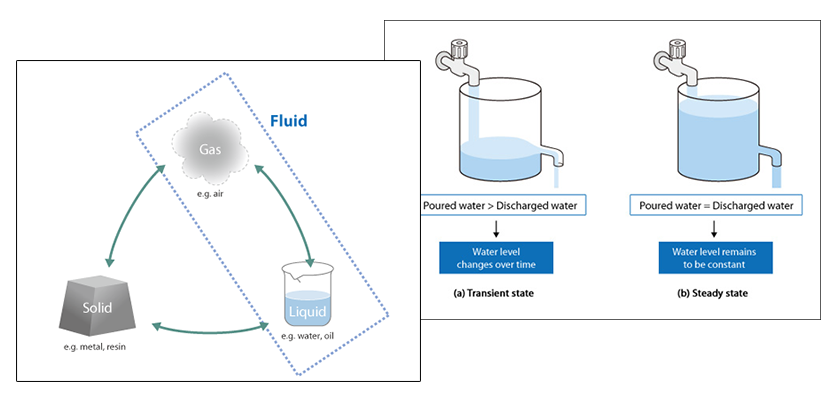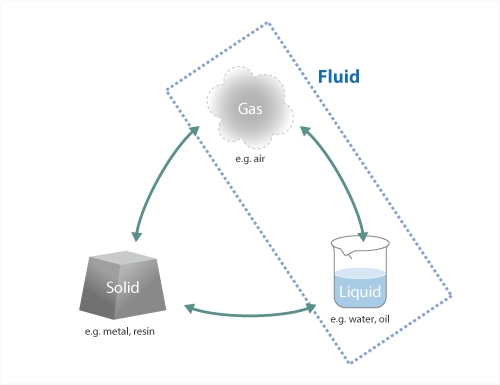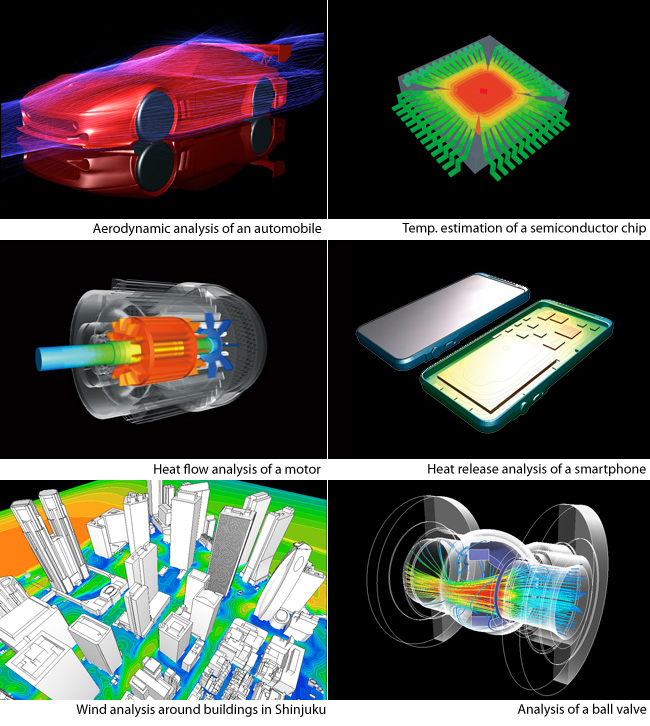Basic Course of Thermo-Fluid Analysis 01: Chapter 1 Thermo-fluid analyses - 1.1 Thermo-fluid-related phenomena, 1.2 Advantages of CFD analyses

Introduction
The Basic Course of Thermo-fluid Analysis series is intended for those who have a beginning understanding of thermo-fluid analyses and want to start using thermo-fluid analysis software or have just started to use it. The information provided in this series will present fundamental thermo-fluid analysis principles that will help build a solid foundation for future learning.
With the rapid development of software and hardware products and technologies, the environment and expectations for product design and development have dramatically changed. For example, engineers used to design in 2D, whereas today, most design is done in 3D. In the past, computer simulations were often home-grown and used correlations developed from experimental data. Today commercial computer software uses 3D models and contains hundreds of thousands of elements, to simulate complex physical phenomena at the element level.
During this trend, computer-aided engineering (CAE) has become very popular in engineering. CAE tools once required specialists to use them. However, today, more engineers in the field of thermo-fluid dynamics (Computational Fluid Dynamics: CFD ) are using computational fluid dynamics (CFD) software as part of their daily responsibilities. This shows the growing need for thermo-fluid analysis software to be a fundamental part of the engineer's toolkit.
Some engineers, however, may find it difficult to understand the complex theories and unfriendly technical terms used in fluid dynamics and CFD. They may not be familiar with how the software works or why it works. To help address these needs, this course attempts to simplify complex thermo-fluid concepts and makes them intuitively understandable. This is done without using complicated technical expressions or equations. We hope you enjoy this course series and that the contents help you better understand thermo-fluid analyses and CFD.
Chapter 1: Thermo-fluid analyses
This chapter describes basic phenomena about fluid flow and heat transfer. It also discusses some advantages and disadvantages of using CFD software.
1.1 Thermo-fluid-related phenomena
Air and water at room temperature are characterized by the fact that they flow without any specific shape. Substances with this characteristic are collectively called fluid .

Figure 1.1: Three states of matter
A variety of fluids, such as air and water, exist on the earth. The flow of a fluid and heat transfer relate to many phenomena observed in our everyday lives.
- The air flow around automobiles and airplanes highly affects their performance.
- Electronic devices and electric circuits must be designed to readily release heat and keep the temperature below limit so the components won't overheat.
- Understanding the flow of air and heat in and around building structures is crucial for properly designing efficient air-conditioning systems to create a comfortable inside environment.

Figure 1.2: Phenomena related to the flow of a fluid and heat transfer
1.2 Advantages of CFD analyses
Prior to computational simulation, new designs were evaluated by running tests. Then, the test results and experience were used to dictate design modifications. The test results to drive design improvements use real world data, which is very reliable. However, running tests is expensive in terms of cost, time, and labor.
CFD software is a computational tool that helps overcome these obstacles. CFD stands for Computational Fluid Dynamics , which is the science of using the computer to simulate how fluids and energy flow. As analysis technology and computer performance improved, CFD accuracy improved. Today many companies routinely use CFD to design their products. Some of the advantages of CFD are as follows:
- The effects of different operating conditions can be evaluated without creating prototypes. Development time and total cost can be reduced.
- Detailed data can be obtained even in places where experimental measurements may not be possible. Conditions can be simulated when it may be difficult or even nearly impossible to achieve data experimentally.
- The flows of a fluid and energy are difficult to visualize. However, CFD software provides a medium for seeing the invisible. Visualizing the computational results makes it possible to objectively explain phenomena.
The following figures are some examples of CFD analyses.

Figure 1.3: Examples of CFD analyses
As you can see, CFD software has many attractive features. However, as with anything, it also has its weak points. For the simulation of a computationally intensive physical phenomenon, the physical model or object geometry may be simplified. Errors related to the simplification can occur. In addition, any numerical calculation by a computer always risks calculation error.
In conclusion, being fully aware of the advantages and disadvantages of using CFD software is crucial. In addition, the simulation results should be validated using measurement data to ensure the results are consistent with real-world phenomena and physics.

About the Author
Atsushi Ueyama | Born in September 1983, Hyogo, Japan
He has a Doctor of Philosophy in Engineering from Osaka University. His doctoral research focused on numerical method for fluid-solid interaction problem. He is a consulting engineer at Software Cradle and provides technical support to Cradle customers. He is also an active lecturer at Cradle seminars and training courses.


